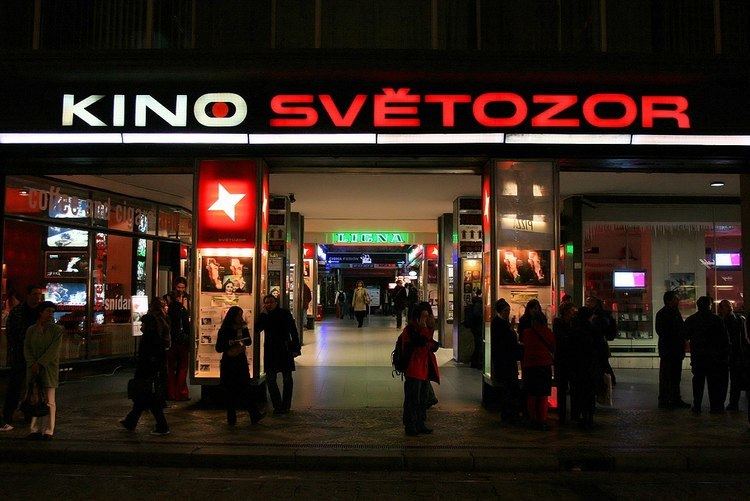No. of screens 668 (2011) Animated 2 (4.4%) Total 10,789,760 | Fictional 23 (51.1%) Documentary 20 (44.4%) | |
 | ||
Main distributors Bontonfilm 34.0%
Falcon 31.0%
Warner Bros. 14.0% | ||
Czech cinema is the name for cinematography of Czech Republic, as well as the Czech cinematography while it was a part of other countries.
Contents
- Before WW2
- WW2
- From the end of the WW2 until the New Wave
- New Wave
- After New Wave until the 1990
- 1990s and beyond
- Czech films
- List of notable Czech directors
- References
Three Czech/Czechoslovak movies that won the Academy Award for Best Foreign Language Film were The Shop on Main Street (Obchod na korze) by Ján Kadár and Elmar Klos in 1965, Closely Watched Trains (Ostře sledované vlaky) by Jiří Menzel in 1967 and Kolya (Kolja) by Jan Svěrák in 1996. Several others were nominated.
The most viewed Czech film ever is Proud Princess from 1952. It was seen by 8,222,695 people. The film also won a prize for a child film at Karlovy Vary International Film Festival.
Marketa Lazarová was voted the all-time best Czech movie in a prestigious 1998 poll of Czech film critics and publicists.
Before WW2
The first Czech film director and cinematographer was Jan Kříženecký, who since the second half of the 1890s filmed short documentaries called "Newsreels". The first permanent cinema house was founded by Viktor Ponrepo in 1907 in Prague. Sound was first used in Czechoslovakia in the film Když struny lkají (1930). Then the Czech movie industry experienced a boom period which lasted until World War II. Barrandov Studios were launched in 1933, it is the largest film studio in the country and one of the largest in Europe. At present the studios are often called the "European Hollywood" or "Hollywood of the East" due to increasing interest of western productions.
WW2
During WW2, many major pre-war film directors contiued to make films, including Otakar Vávra, Martin Frič, Miroslav Cikán, Jan Sviták (who was murdered at the end of the war by an anti-fascist mob), Vladimír Slavínský, František Čáp, Zdeněk Gina Hašler (who emigrated to the USA after the war) and Václav Binovec.
Vladimír Čech started his career during the WW2, as well as Václav Krška. Scenario writer Karel Steklý turned to film directing at the end of the war and maintained both careers until his death.
Well-known actor Rudolf Hrušínský (born 1920) also tried himself as a director during this period.
From the end of the WW2 until the New Wave
Famous movies of the 50s include: Journey to the Beginning of Time, The Good Soldier Švejk, The Emperor and the Golem, The Princess with the Golden Star, The Fabulous World of Jules Verne, Proud Princess (the most viewed Czech film ever) and Once Upon a Time, There Was a King....
New Wave
The Czechoslovak New Wave is most frequently associated with the early works of directors such as Miloš Forman, Věra Chytilová, Jiří Menzel and others, although works by older, more established Czechoslovak directors such as Karel Kachyňa and Vojtěch Jasný are also placed in this category. Encompassing a broad range of works in the early to mid-1960s, the Czechoslovak New Wave cannot be pinned down to any one style or approach to filmmaking. Examples range from highly stylised, even avant-garde, literary adaptions using historical themes (e.g. Jan Němec's Diamonds of the Night (Démanty noci)) to semi-improvised comedies with contemporary subjects and amateur actors (e.g., Miloš Forman's The Firemen's Ball (Hoří, má panenko)). However, a frequent feature of films from this period were their absurd, black humour and an interest in the concerns of ordinary people, particularly when faced with larger historical or political changes. The acid western comedy film Lemonade Joe was a famous parody of old-time westerns. Cinematic influences included Italian neorealism and the French New Wave, although the Czechoslovak New Wave also builds organically on developments in Czechoslovak cinema in the late 1950s when directors broke free from the influence of Stalinism in the film industry.
After New Wave until the 1990
Many of the directors active in the previous periods continued to work in this period, including Otakar Vávra and Jiří Menzel.
1990s and beyond
Among the most successful Czech films made after the system change are: Kolya, Divided We Fall, Cosy Dens, Loners, I Served the King of England and Walking Too Fast.
